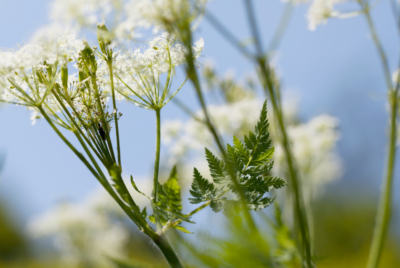Pure Camomile Tea
Pure Camomile Tea
I. Introduction to Pure Camomile Tea
There’s something genuinely magical about the simplicity and warmth of pure camomile tea. For years, it’s been my go-to remedy for unwinding after a long day, and I’ve found its gentle, floral notes to be a balm for both body and soul. Camomile tea, with its myriad of health benefits and soothing properties, isn’t just a beverage; it’s a ritual, a moment of calm in the hustle of everyday life.

a. Overview of Pure Camomile Tea
Camomile tea, derived from the dried flowers of the camomile plant, is renowned for its calming and therapeutic benefits. This herbal infusion boasts a light, airy taste with subtle floral notes, making it a favored choice among tea enthusiasts seeking relaxation and comfort. Its popularity spans across cultures and centuries, used both for its soothing effects on the mind and its gentle healing properties for various ailments. Whether enjoyed as a nightly ritual to encourage sleep or savored for its stress-relieving qualities, camomile tea stands out as a versatile and timeless beverage. It’s caffeine-free, making it an ideal choice for any time of day or night.
b. Personal Affinity Towards Pure Camomile Tea
My personal journey with camomile tea began as a quest for tranquility in the bustling rhythm of daily life. Each cup feels like a pause, a momentary retreat to a serene space where time slows down. I cherish the ritual of brewing camomile tea, from the aromatic release of its floral essence to the first soothing sip that promises relaxation. This simple pleasure has become a cherished part of my evening routine, a natural way to unwind and reflect. Camomile tea, with its delicate flavor and comforting warmth, has not just been a beverage for me but a gentle companion through life’s ups and downs.
II. Understanding Camomile
What exactly is camomile? Often associated with tranquility and sleep, camomile is a herb that comes from the Asteraceae plant family. Its use dates back centuries, with civilizations across the world valuing it for its medicinal properties. Camomile flowers resemble daisy-like blooms, and they’re the part of the plant used for making tea.
a. What is Camomile?
Camomile is a flowering herb recognized for its daisy-like flowers, which have been used for centuries for their medicinal and therapeutic properties. There are two primary types: German Camomile (Chamomilla recutita) and Roman Camomile (Chamaemelum nobile), both prized for their soothing effects. Camomile contains several compounds, including bisabolol, chamazulene, flavonoids, and terpenoids, contributing to its anti-inflammatory, antispasmodic, and sedative qualities. It’s widely consumed as a herbal tea, appreciated not only for its health benefits but also for its mild, sweet flavor and ability to induce relaxation.

b. History of Camomile Use
The history of camomile use stretches back to ancient civilizations, including the Egyptians, Romans, and Greeks, who revered it for its healing powers and as a symbol of the sun due to its bright, sun-like appearance. Egyptians dedicated camomile to their gods for curing fevers and used it in the mummification process. In medieval times, it was a staple in any apothecary’s garden, recommended for various ailments from sleep disturbances to digestive issues. Over centuries, its popularity has endured, cementing camomile’s status as a timeless and versatile herbal remedy in traditional medicine across the globe.
III. Different Types of Camomile
Diving deeper into the world of camomile, it becomes clear that not all camomiles are created equal. The two most commonly known varieties are German Camomile (Chamomilla recutita) and Roman Camomile (Chamaemelum nobile), each with distinct characteristics and uses.
a. German Camomile,
often considered the more popular variety for tea, is annual and can grow in a range of environments. It’s known for its taller stature and small, white flowers with yellow centers. The flavor is mildly sweet and earthy, making it a favorite for those seeking a soothing, restorative tea.
b. Roman Camomile,
on the other hand, is a perennial plant that grows close to the ground and has a slightly more bitter taste compared to its German counterpart. It’s often used in skin care products and aromatherapy for its calming effects on the skin and mind.
c. Other Varieties
Beyond these two, there are other less common types of camomile, each with its unique properties. However, when it comes to brewing a cup of camomile tea, German and Roman varieties are most beloved for their gentle, relaxing qualities.
IV. Cultivating Pure Camomile
a. Can you grow different types of camomile together?
Absolutely! Camomile is quite forgiving and adaptable, making it possible to cultivate various types in the same garden. These plants generally prefer full sun and well-drained soil but can tolerate a range of conditions. Mixing German and Roman camomile can create a garden that’s not only visually appealing but also rich in diversity, offering a blend of flavors and benefits for tea.
Growing camomile at home is rewarding, as freshly picked flowers make for the most aromatic and flavorful tea. Whether you’re planting seeds directly in your garden or starting them indoors, camomile is a hardy herb that, once established, requires minimal care. It even has the added benefit of attracting beneficial insects, such as bees and butterflies, adding to the health and beauty of your garden space.

In the realm of herbal teas, camomile stands out for its ease of cultivation and the sheer variety it offers. Whether you’re a seasoned gardener or a novice, adding camomile to your garden can provide a sense of accomplishment and a steady supply of this cherished herbal remedy.
Continuing to explore the benefits and uses of camomile, including how to brew the perfect cup and incorporate it into daily rituals, reveals the depth of appreciation for this humble herb. Its long history and versatility in addressing a range of conditions underscore camomile’s enduring appeal, making it a staple in herbal medicine and a beloved companion in moments of relaxation and reflection.
V. Cultivating Camomile
a. Can You Grow Different Types of Camomile Together?
Yes, you can certainly grow different types of camomile together in your garden. Both German and Roman camomile can coexist harmoniously, as they share similar growing conditions but differ slightly in their growth habits and uses. Planting them together allows gardeners to enjoy the benefits of both varieties, from their soothing aromas to their diverse applications in teas, culinary uses, and natural remedies. When grown together, they can create a visually appealing and aromatic herbal garden spot, enriching the garden’s biodiversity and offering a handy supply of these beneficial herbs right at your doorstep.
b. Tips for Growing Camomile at Home
Growing camomile at home is surprisingly straightforward and rewarding. Here are some tips to ensure a thriving camomile garden:
Choose the Right Spot: Camomile thrives in full sun and well-drained soil. Find a sunny spot in your garden, ensuring the soil is not overly wet.
Sow Seeds Directly: Camomile seeds are best sown directly into the soil in spring, after the last frost. They need light to germinate, so simply scatter the seeds and press them gently into the soil without covering them.
Water Thoughtfully: While camomile is drought-tolerant, it’s important to keep the soil lightly moist until the seeds germinate. Once established, camomile requires minimal watering.
Thin Seedlings: Once the seedlings emerge, thin them out so they’re about 6 inches apart to allow for ample growth.
Harvest Flowers Properly: For the best tea, harvest camomile flowers when they’re fully open, typically in the morning after the dew has evaporated. This preserves their aromatic oils.
Pest and Disease Management: Camomile is generally resistant to pests and diseases, but it’s good practice to keep an eye out for any signs of trouble and act swiftly to mitigate issues.
By following these simple guidelines, you can enjoy the delights of homegrown camomile, whether for its beauty or the soothing teas it can provide.
VI. Health Benefits of Pure Camomile Tea
a. Sleep and Relaxation
Camomile tea is widely celebrated for its natural sedative properties, making it an ideal beverage for promoting sleep and relaxation. The herb contains an antioxidant called apigenin, which binds to certain receptors in the brain to reduce insomnia and encourage sleepiness. Drinking camomile tea before bed can help calm the mind, ease anxiety, and facilitate a peaceful transition into sleep. Its gentle, soothing effect on the nervous system also makes it a preferred choice for those looking to unwind after a stressful day, enhancing overall relaxation and well-being.
b. Digestive Health
Camomile tea offers significant benefits for digestive health, acting as a natural remedy for various gastrointestinal disturbances. Its anti-inflammatory and antispasmodic properties can soothe the digestive tract, relieving symptoms of indigestion, gas, and bloating. Additionally, camomile’s mild laxative effect can aid in relieving constipation, promoting regular bowel movements.
For those suffering from stomach ulcers or gastritis, camomile tea can help reduce stomach acidity and inhibit the growth of bacteria that contribute to ulcer development. Regular consumption can support a healthy digestive system and alleviate discomfort associated with digestive issues.

c. Other Health Benefits
Beyond its effects on sleep and digestion, camomile tea boasts a range of other health benefits. Its anti-inflammatory properties can help reduce the severity of conditions like arthritis, while its antioxidant content supports overall immune health. Camomile has also been shown to have a positive effect on heart health by lowering blood pressure and cholesterol levels.
For skin health, applying camomile topically can soothe irritations and accelerate healing. Furthermore, its antidiabetic effects may help in managing blood sugar levels. Incorporating camomile tea into your diet can thus contribute to a holistic approach to health and wellness.
VII. How to Brew the Perfect Cup of Pure Camomile Tea
a. Choosing Your Camomile
Selecting the right camomile is crucial for crafting the perfect cup of tea. For the most aromatic and flavorful brew, opt for organic, loose-leaf camomile flowers. These are typically fresher and of higher quality than pre-packaged tea bags, allowing the full spectrum of flavors and therapeutic properties to shine through.
choosing between German and Roman camomile, consider the German variety for a slightly sweeter, more apple-like flavor ideal for tea. Freshness is key, so look for camomile that has a vibrant color and a strong, pleasant aroma, indicators of a product that hasn’t been sitting on the shelf for too long.
b. Brewing Techniques
Mastering the art of brewing camomile tea can enhance its soothing effects and flavor profile. Start with fresh or dried camomile flowers, using about one tablespoon per cup of water. Heat water to just below boiling to avoid scalding the delicate flowers, which can release bitterness.
Pour the hot water over the camomile and let it steep for 5 to 10 minutes, depending on your taste preference for strength. Covering the cup or teapot while steeping can help trap the essential oils and aromas within the tea, resulting in a more flavorful and potent brew.
Strain the camomile flowers and enjoy the tea hot, or let it cool for a refreshing cold beverage.
VIII. Incorporating Pure Camomile Tea into Your Daily Routine
a. Morning Rituals
Incorporating camomile tea into morning rituals can significantly enhance the start of your day. Begin by brewing a warm cup as you settle into a quiet, reflective space. This simple act sets a tone of calmness and mindfulness, encouraging you to slow down and savor the moment. Use this time to journal, meditate, or simply sit in silence, allowing the soothing properties of camomile to infuse your day with tranquility. This ritual not only nurtures your mental health but also prepares you emotionally and physically to face the day’s challenges with a sense of calm and collectedness.

b. Relaxation Practices
For an effective relaxation practice, camomile tea can be a cornerstone of your evening routine. Its calming effects are ideal for easing into a state of relaxation after a busy day. Create a ritual by drinking camomile tea an hour before bed, complementing it with activities like a warm bath, reading, or gentle yoga to further signal to your body it’s time to unwind. This practice not only aids in reducing stress and anxiety but also promotes deeper and more restorative sleep. Making camomile tea a part of your nightly routine can help you disconnect, relax, and ensure a peaceful transition into sleep.
IX. Camomile Tea Blends and Flavors
Exploring camomile tea blends and flavors can transform your tea-drinking experience, introducing a delightful variety to your routine. Camomile’s mild, sweet profile makes it an excellent base for blending with other herbs, spices, and flavors, enhancing its natural properties and adding complexity to the taste.
a. Blending Camomile with Other Herbs:
camomile with lavender or mint is not only aromatic but also amplifies the calming effects, making it a perfect evening drink. Lavender adds a floral note and further aids in relaxation and stress relief, while mint introduces a refreshing, cooling sensation, aiding digestion.
b. Profiles:
For a citrusy twist, adding lemon balm or slices of fresh lemon can brighten the flavor, adding a bit of zest that complements camomile’s gentle nature. Honey is a popular addition to sweeten the brew naturally, enhancing the tea’s soothing qualities without overpowering its delicate flavor.
Experimenting with camomile tea blends allows for personalization according to taste preferences and desired health benefits. Whether seeking deeper relaxation, improved digestion, or simply a flavorful alternative to single-herb teas, camomile blends offer a versatile and enjoyable option.

X. Conclusion
Camomile tea, with its myriad of types, health benefits, and ways to enjoy, stands as a testament to the simple pleasures that can have profound impacts on our well-being. From its historical roots as a medicinal herb to its modern-day status as a beloved herbal tea, camomile continues to offer a natural, soothing remedy for a variety of ailments and a path to relaxation and peace. Whether you’re cultivating it in your garden, experimenting with blends, or incorporating it into your daily rituals, camomile tea embodies the essence of nature’s gentle yet powerful support for our health and happiness. Embrace the calm, and let camomile tea be your guide to a more serene and mindful way of living.
FAQs About Camomile Tea
1.Is it safe to drink camomile tea every day?
Yes, it’s generally safe for most people to drink camomile tea daily. However, if you’re allergic to plants in the daisy family, pregnant, or taking certain medications, consult with a healthcare provider first.
2.Can camomile tea help with anxiety?
Camomile tea is known for its calming properties, which can help alleviate anxiety and promote relaxation. Its natural compounds interact with brain receptors to reduce stress.
3.Does camomile tea have caffeine?
No, camomile tea is naturally caffeine-free, making it an excellent choice for those looking to reduce their caffeine intake or seeking a calming beverage before bed.
4.How long should camomile tea steep?
For the best flavor and therapeutic benefits, steep camomile tea for 5 to 10 minutes. Adjust the steeping time according to personal preference for strength.
5.Can camomile tea aid digestion?
Yes, camomile tea can help improve digestion by relaxing the digestive tract muscles, easing gas, bloating, and mild indigestion. Its anti-inflammatory properties may also benefit those with inflammatory digestive conditions.



